Ruga Lumina
What is our perception of space? What does it mean to feel space?
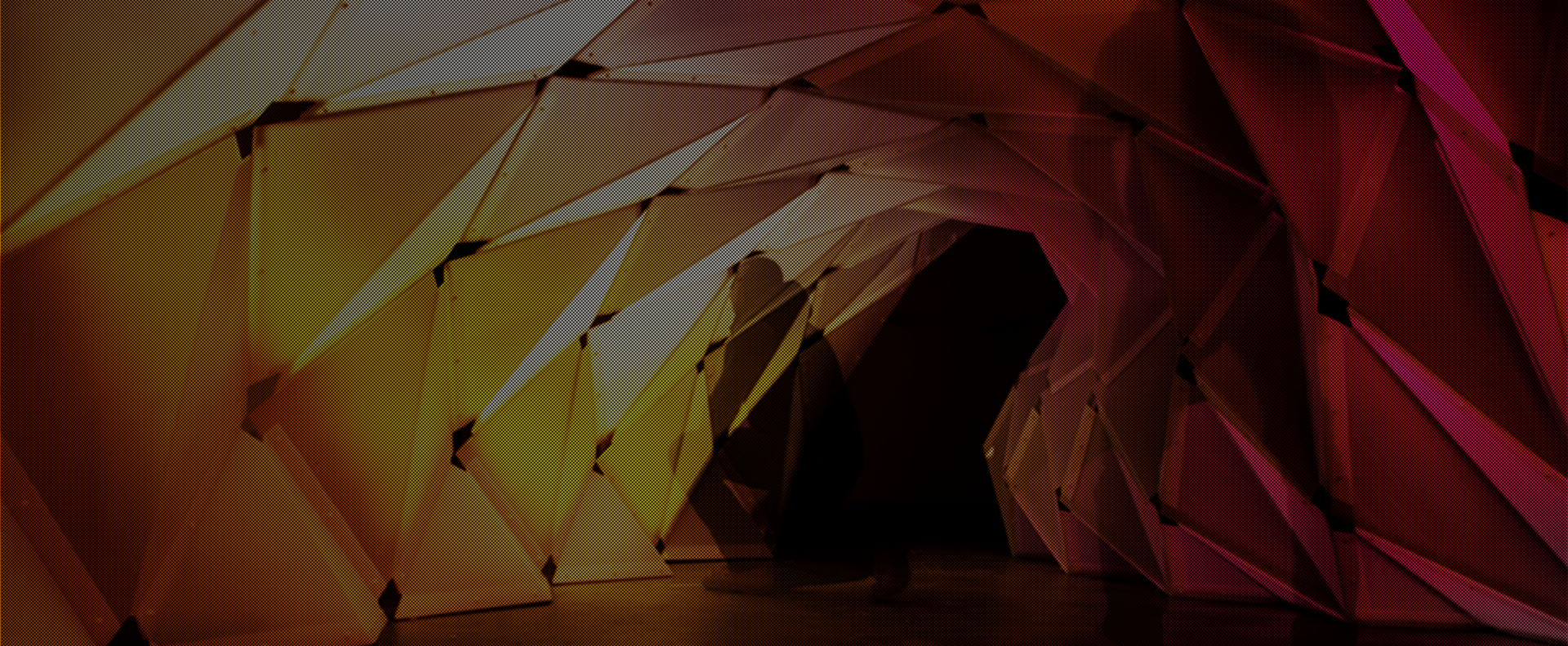
Ruga Lumina
What is our perception of space? What does it mean to feel space?

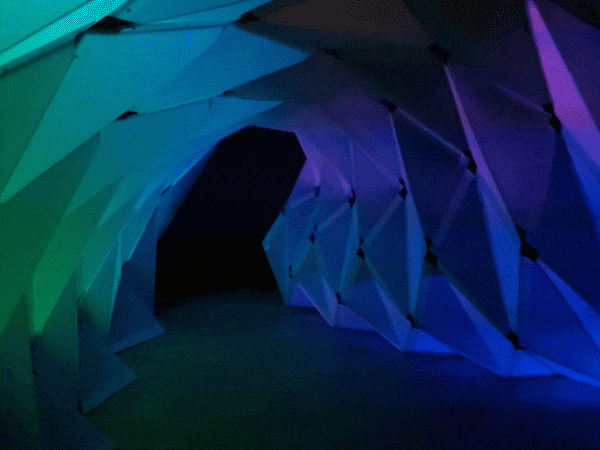
In working with Jiangmei Wu, the artist, I learned in great detail about her research agenda to investigate “body-space relationships.” It is her intent to probe into the psychological, and aesthetic qualities that people use to define boundaries between that which is inside, and that which is outside. The experience, then, should help visitors wrestle with this notion of boundary space. My work with this project was to help translate a rather heady topic into accessible interactions.
The structure is comprised of thin semi-opaque sheets of folded material, its lattice framework supported by thin wire descending from the ceiling. The artist had in mind the gentle movement of light across space. I needed to generate an interface that would allow her to make subtle changes to the display and interaction of light across the structure. It was important to the success of the project that the timing, hue, and intensity of the light all sync with the movement of the viewers.
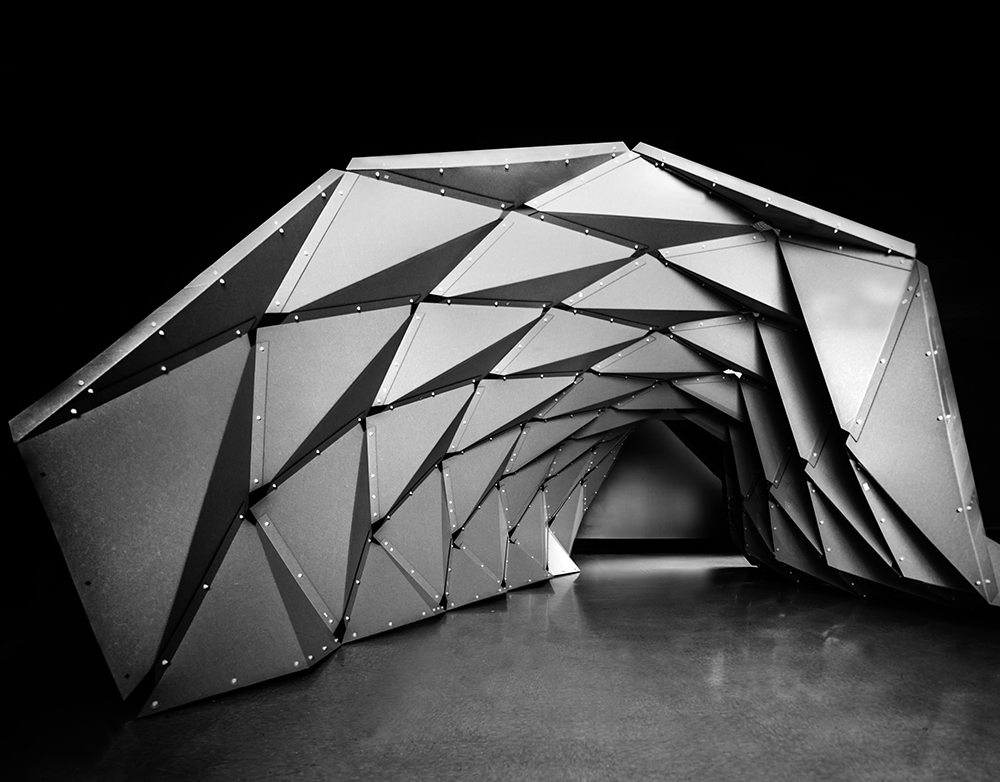
“Ruga” is an anatomical fold, a boundary, a skin. Like our own skin, it’s buffeted by all sorts of forces, and while you may be consciously aware of its external effects, what happens on the inside is much more amorphous. To help express this notion we experimented with sound, heatmaps, light and other sensors to “capture” the ambient surrounding space and project it inside of the surface; we looked at literal representations of skin ranging from animal to human textures and skin tones. But, after multiple iterations with participants, we found that the abstract visualization of color allowed the user to have a more interpretive relationship with the structure, which ultimately aligned with the artist’s goals.
Most notably, it was the ah ha moment that users expressed when they approached the structure and recognized that their body was causing a dramatic change to the lighting effects. This juxtaposed nicely with the experience of being on the inside of the skin and have no control over the colored environment. Thus realizing the artist’s vision of imbuing visitors with a definite sense of inside and outside.
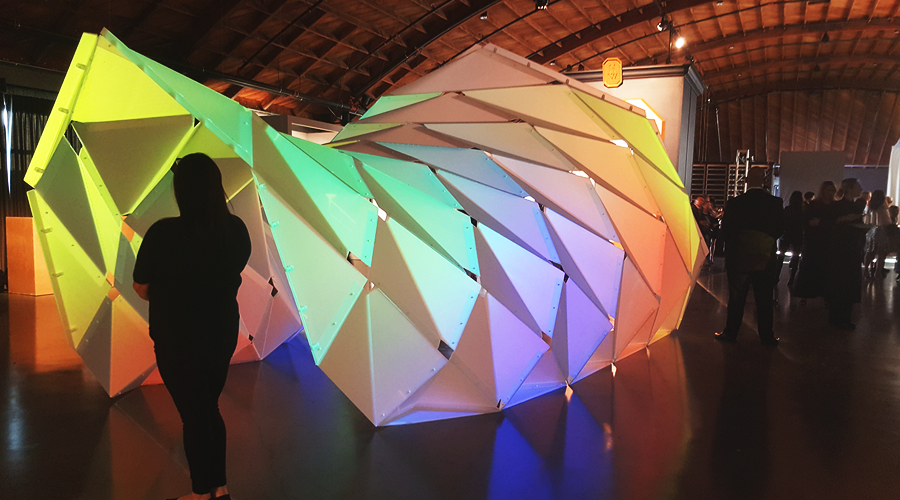
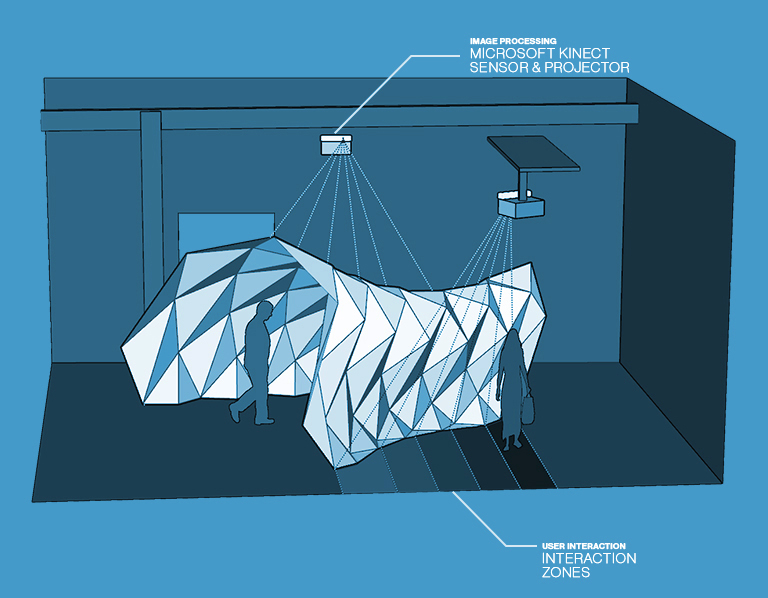
The primary technical components for the exhibit were the high lumen short-throw projectors, Microsoft Kinect sensors, and the physical structure itself. The projectors casted an animation of a series of gradient states across the form. As visitors walked around the structure, the Kinect sensor would interpret their location and change the speed, hue, and intensity of the light, creating the impression that the visitor’s aura was influencing the vibrancy of the structure. As visitors drew away from the form, it would return to its resting animation state.
To achieve the artist’s desired effect, she needed a mechanism to control the color and intensity of the light projected to the structure. Light, however behaves differently on screen versus in the world, and a subtle shade of magenta on the computer may have a wide gradation between pink and purple on a slanted surface with self-intersecting shadows. Moreover, even a full scale mockup in studio will have different ambient lighting conditions than the institute or exhibit hall where the installation debut.
To handle this challenge, I created a Java based controller that displayed a flat, cell-shaded representation of the structure to approximate lighting differences. The controller enabled the artist to adjust transition speeds and gradient colors for each animation state. In practice, we were able to orchestrate the general look and feel of the interaction in studio, and during installation, we were able to fine tune the experience in situ on site. Overall, this achieved the artist’s vision for the most subtle of differences in light and timing.
Low fidelity prototypes have their limits: In the initial testing of the structure we leaned in heavily to the idea of having animal skin representations on the outside form; but, it wasn’t until we actually began rendering in high fidelity that we recognized that this particular visual styling wouldn’t be effective. Hifi takes longer to make, but it’s worth the extra effort to make sound course correction.